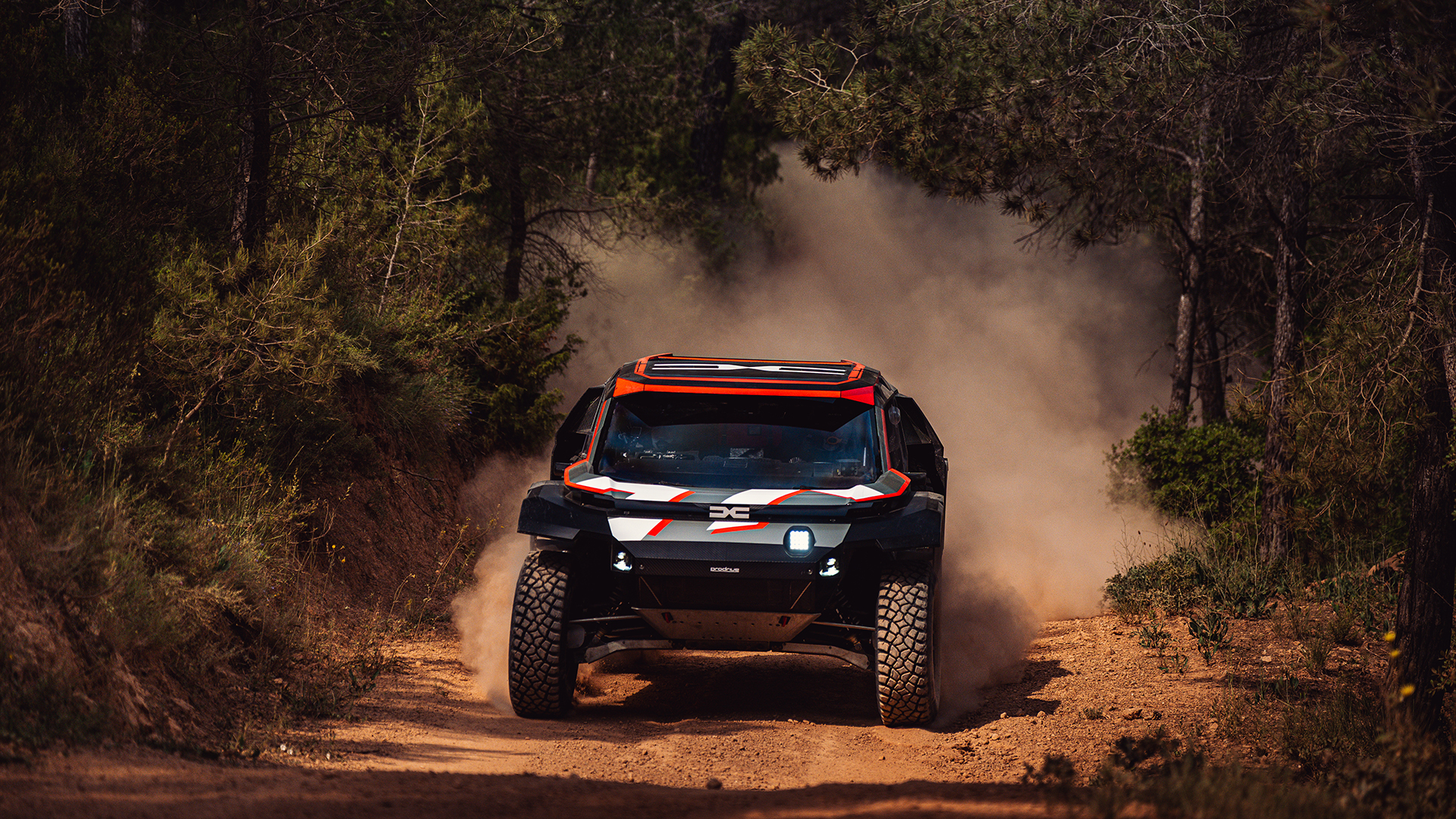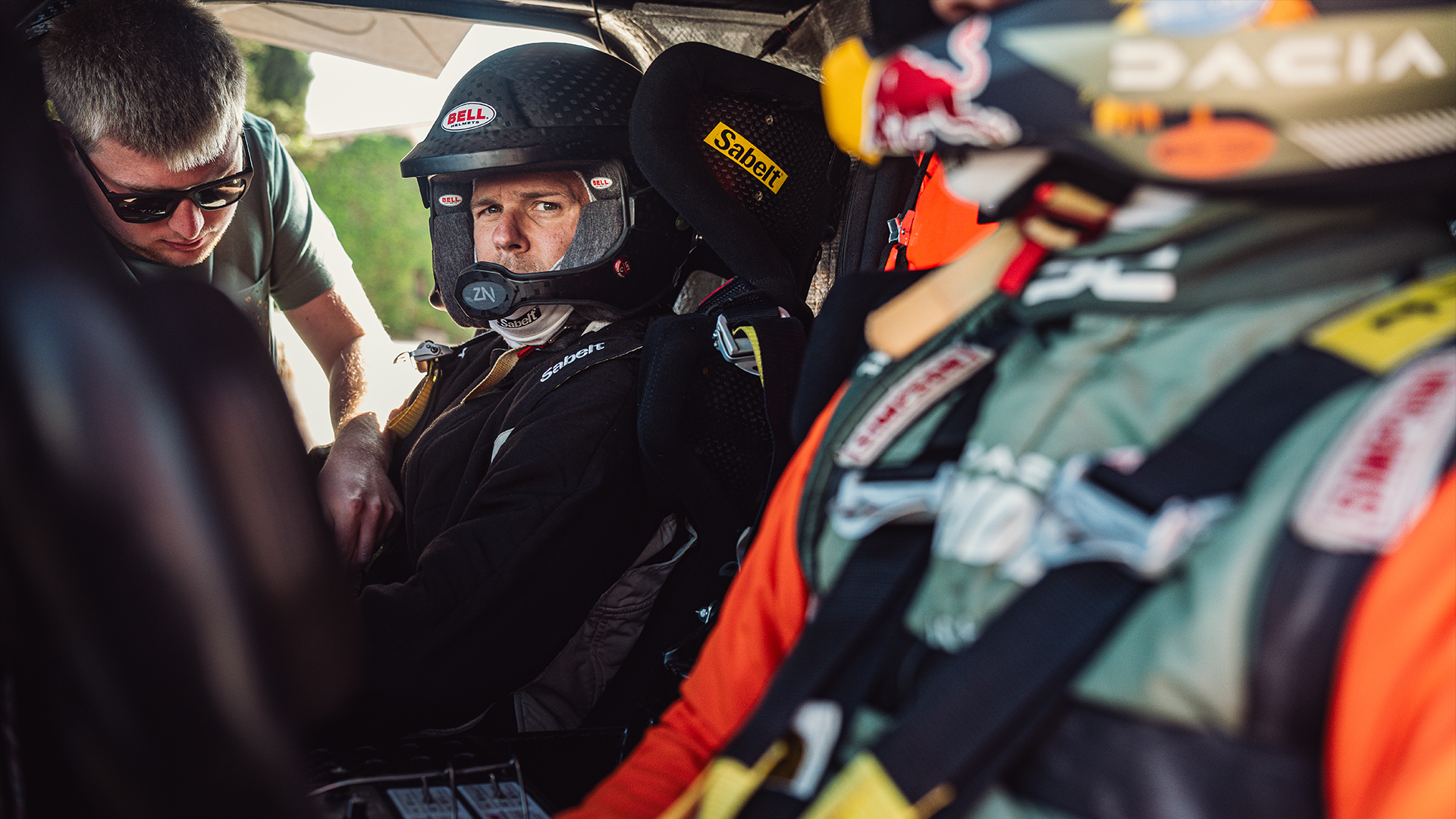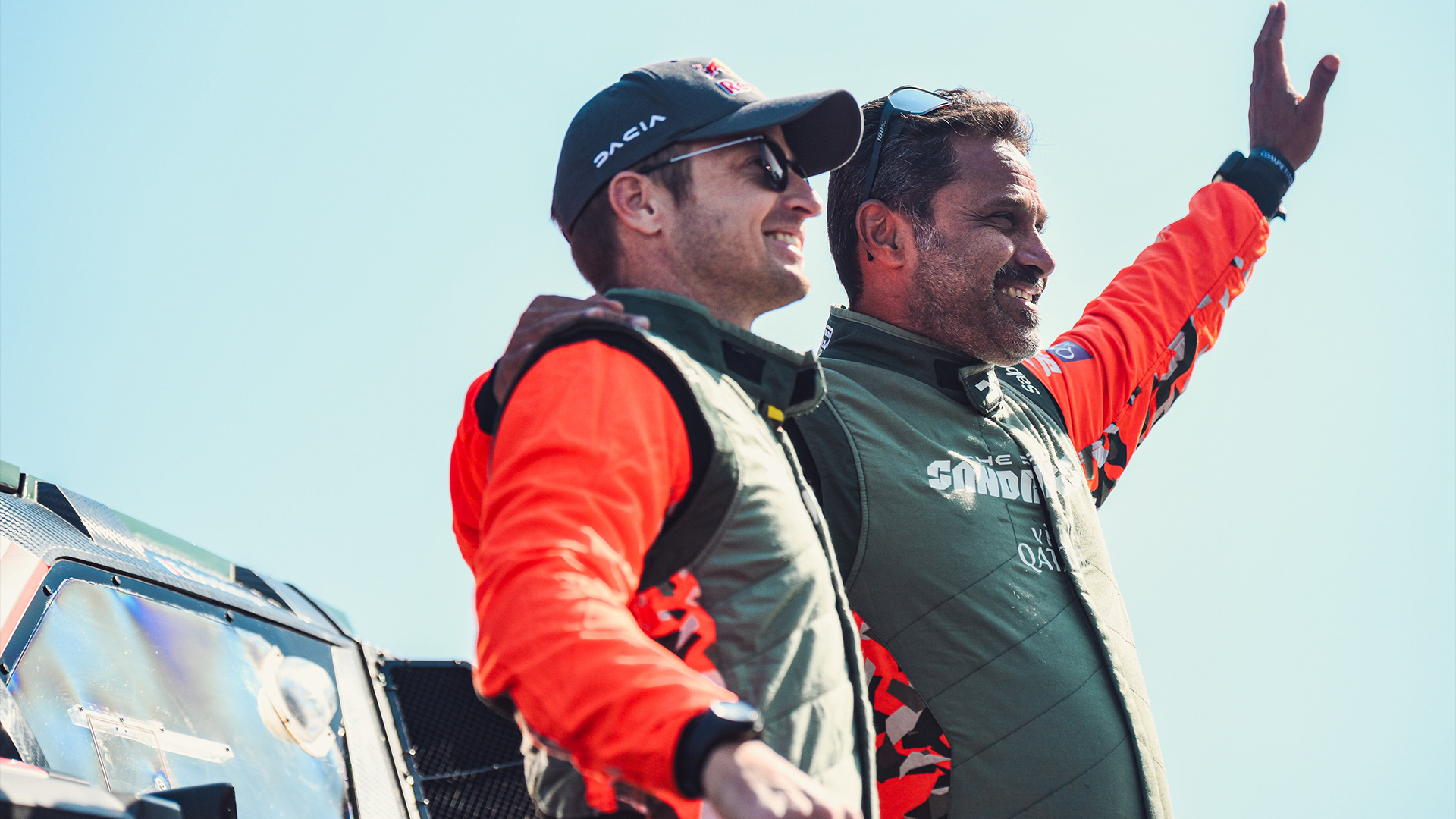Dacia’s Batmobile-like racer runs on sustainable biofuels, eats deserts for breakfast and scared me senseless

Dacia has somewhat of a cult following in automotive circles. Adored for its no-fuss approach to motoring, affordable asking prices and surprisingly capable machines, the Romanian brand (now a firm fixture of the Renault Group) sells a small but reliable line of family SUVs and hatchbacks to Europe.
Where it once raided the Renault parts bins and cut costs by removing creature comforts where it could, Dacia now has a strong visual and brand identity of its own.
The Duster loves exploring the great outdoors with a tent bolted to its roof (or inside it), for example, while the diminutive electric Spring was among the best value EVs when it launched.
But the marque has entered entirely new territory with its 335bhp off-road behemoth: the Dakar Rally-conquering Sandrider.
Getting my internal organs rearranged by the champ Nasser Al-Attiyah in his menacing Dacia Sandrider. pic.twitter.com/sHEaDyj1deJune 27, 2025
“There is nothing like the Dakar Rally. You have to be physically and mentally fit, able to spend 14 or 15 hours driving the toughest terrain for 15 days,” explains Dacia Sandrider driver and five-time Dakar champion Nasser Al-Attiyah.
“It takes a lot of preparation and a special car to even finish, let alone win.”
The race Al-Attiyah is referring to is often regarded as one of the most grueling on the World Rally-Raid calendar, covering almost 5,000 miles over 14 days of racing through the deserts, dunes, rocks, mud and the tricky terrain of Saudi Arabia.

It is a far cry from the off-road jaunt that once started in Paris and ended in Dakar, Senegal, with all manner of highly tuned motorcycles, cars, trucks, classics and even quad bikes now competing to be crowned champion.
The Dacia Sandrider competes at the very highest level, entering the World Rally-Raid Championship in the Ultimate T1+ category, which is reserved for those purpose-built machines that push the boundaries of technology.
In Dacia’s case, it’s running sustainable fuels in a vehicle that looks like nothing else on the planet… a larger-than-life, ultra-futuristic Batmobile that has been engineered to bash boulders rather than Gotham City bad guys.
Riders of the storm

Climbing into Dacia’s Sandrider is no mean feat, as it requires a certain level of flexibility that this aging writer lacks. With helmet on, it takes a big step up to reach the cockpit thanks to the enormous shock absorbers and 350mm of suspension travel.
The vehicle itself was developed by iconic British rally and race engineering outfit Prodrive, which took care of the tubular chassis, carbon-fiber body work and fettled the 3-liter, twin-turbo V6 engine that powers the machine.
Dacia says that its drivers also had plenty of input during the design process, which explains the clever anti-reflective paint used on the upper part of the dashboard to reduce desert glare and the modular interior that can be flexible to meet the needs of the occupants.
As I am strapped into the Sabelt race harnesses, driver Nasser Al-Attiyah adjusts some of the controls from the baffling array of switchgear dotted around the cabin. Seeing as I’m in the navigators seat, I am merely faced with a blank space where two digital displays would sit during competition.
During events like Dakar, the team only receives the race book minutes before hitting the start line, so every competitor is effectively going in blind. Navigational instructions, including warnings over any upcoming hazards, are delivered to the driver constantly via the co-pilot.

“If I miss an official checkpoint, which only measure 50m in radius, there is no turning back. We have to take the time penalty and move on,” explains Al-Attiyah’s co-pilot Édouard Boulanger. “Hardly a second goes by during a race where I am not feeding Nasser information and some of those races are more than 1,000km,” he adds.
Thankfully I don’t have this task, as we are at Al-Attiyah’s race camp in the mountains outside of Barcelona and, seeing as it is essentially his back garden, the guy know his way around.
We approach the start line, Al-Attiyah gives me a nod and then he floors it, the Sandrider lurching off the line with the sort of brutal cacophony of noise, acceleration and dust that an EV could only dream of producing.
The first corner approaches in a split second and Al-Attiyah pulls the massive hydraulic handbrake, effortlessly pirouetting around the dusty course. Hitting unfathomable speeds, we cling to sheer drops, navigate enormous boulders and dance across the surface.

“Here’s the jump,” Al-Attiyah says with a grin and… bam! A moment of weightlessness as the Sandrider flies through the air before landing with hefty but masterfully controlled thump.
The Sandrider takes it all in its stride, with the suspension system doing an almost mystical job of soaking up the abuse.
Even after five minutes in the passenger seat, my abs are sore from tensing, my neck is taut and my spine has taken a battering. Doing that for two weeks through an actual desert sounds like madness to me.
Sustained performance

During a typical race, Al-Attiyah and his co-driver will consume somewhere in the region of six to seven liters of water.
That’s a lot, but nothing considering the Dacia Sandrider’s 360bhp V6 engine guzzles around 560-liters of fuel during the same time. This is despite the engineering team managing to cut the weight by 15kg, compared to similar prototypes, and reduce drag by 10%.
To offset some of its emissions, Dacia partnered with Aramco to take advantage of its synthetic fuels, which are a lower-carbon option that combine renewable hydrogen with sequestered CO2 to reduce the overall footprint.
According to Aramco, its biofuels can be formed from non-food-competing sources such as bio-waste, industrial waste, or household waste. Its most common fuel is ethanol made from corn or sugarcane residue, for example.
Despite being a bio-fuel, Aramco’s product can be dropped straight into the Sandrider’s engines with no tweaks or tuning required. It performs and handles like any other fossil fuel, albeit one that costs two or three times as much.

Soon, most high-profile racing events will be powered by more sustainable bio-fuels and, as the costs reduce, they could end up making their way onto public forecourts.
World Rally-Raid and the Dakar race in particular are famed for breeding innovation, and this year’s Mission 1000 category was designed to allow manufacturers to experiment with more environmentally friendly propulsion technologies.
Segway was the only manufacturer to field a pure electric vehicle, in the form of its X1000 motorcycle – which sports a 14.5kWh battery and a 50kW motor that recorded a mind-bending max speed of 87mph during Dakar and which completed the full 1,000km (621 mile) course.
In addition to this, a consortium that included Kawasaki, Suzuki, Honda and Yamaha fielded a bespoke buggy that was powered by entirely by hydrogen. It too finished the course without issue.
This might be the first time Dacia has jumped head-first into motor racing, but it is already notching up the wins, with a 1-2 finish in the Rally du Maroc and a victory in Abu Dhabi proving highlights.
Better still, Al-Attiyah is leading the overall FIA World Rally-Raid Championship in the Ultimate division, beating drivers from more established racing entities such as Toyota, Ford and Mini.
While it is unlikely we will see any of this technology trickle down into Dacia’s modest road car range (no rally-spec Duster yet), it backs up the brand’s philosophy of tough, capable machines that perform well beyond what the sticker price would suggest.



